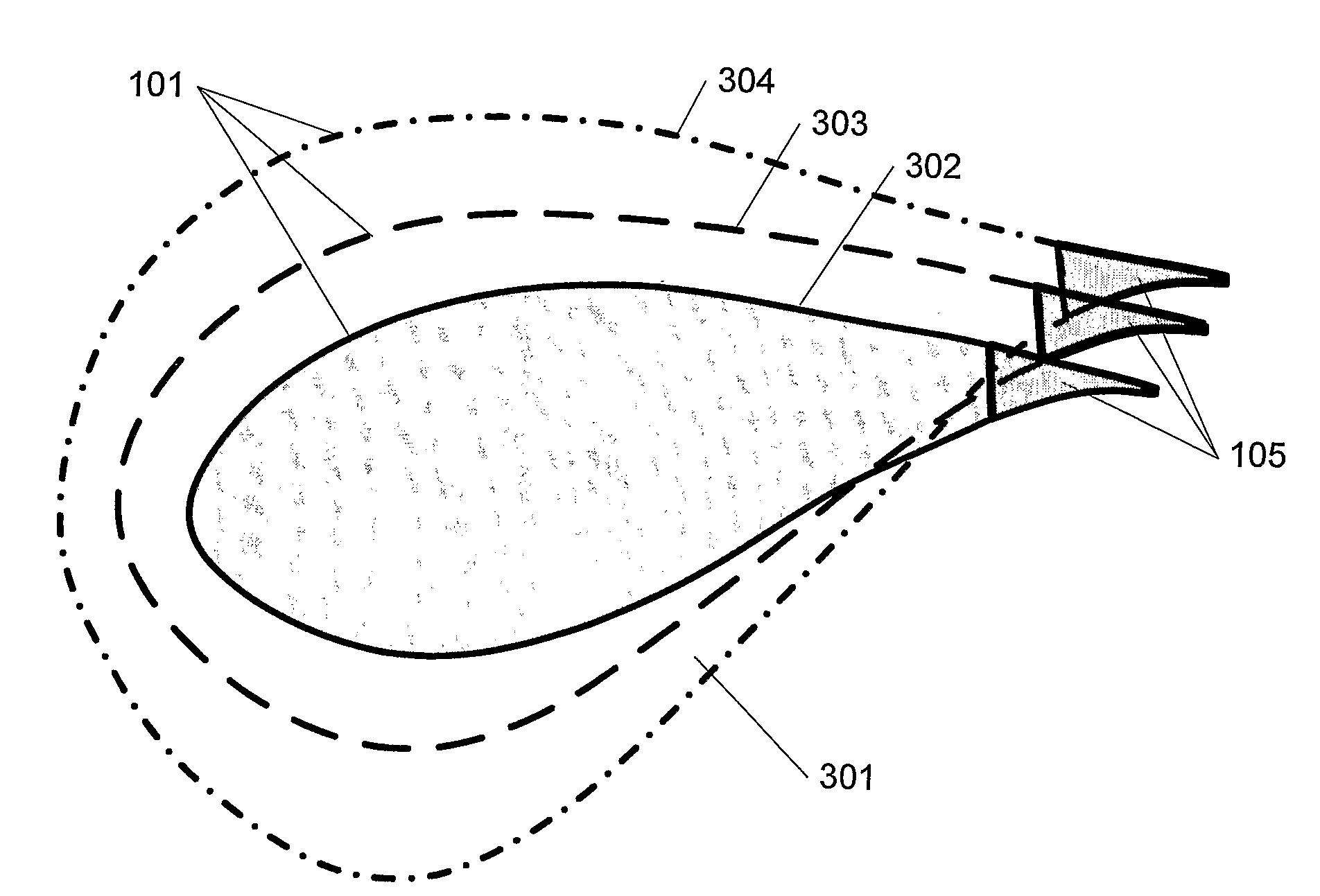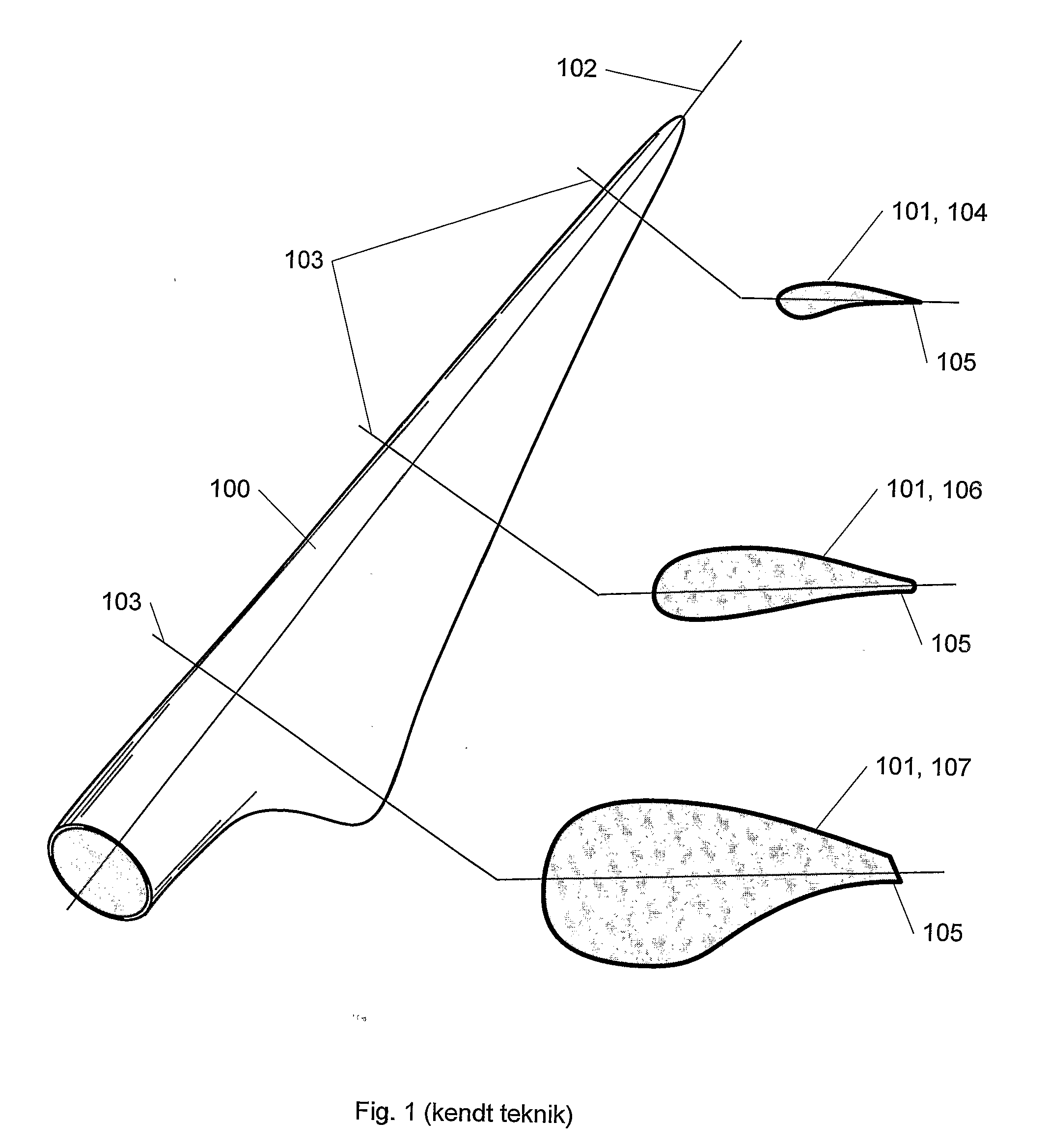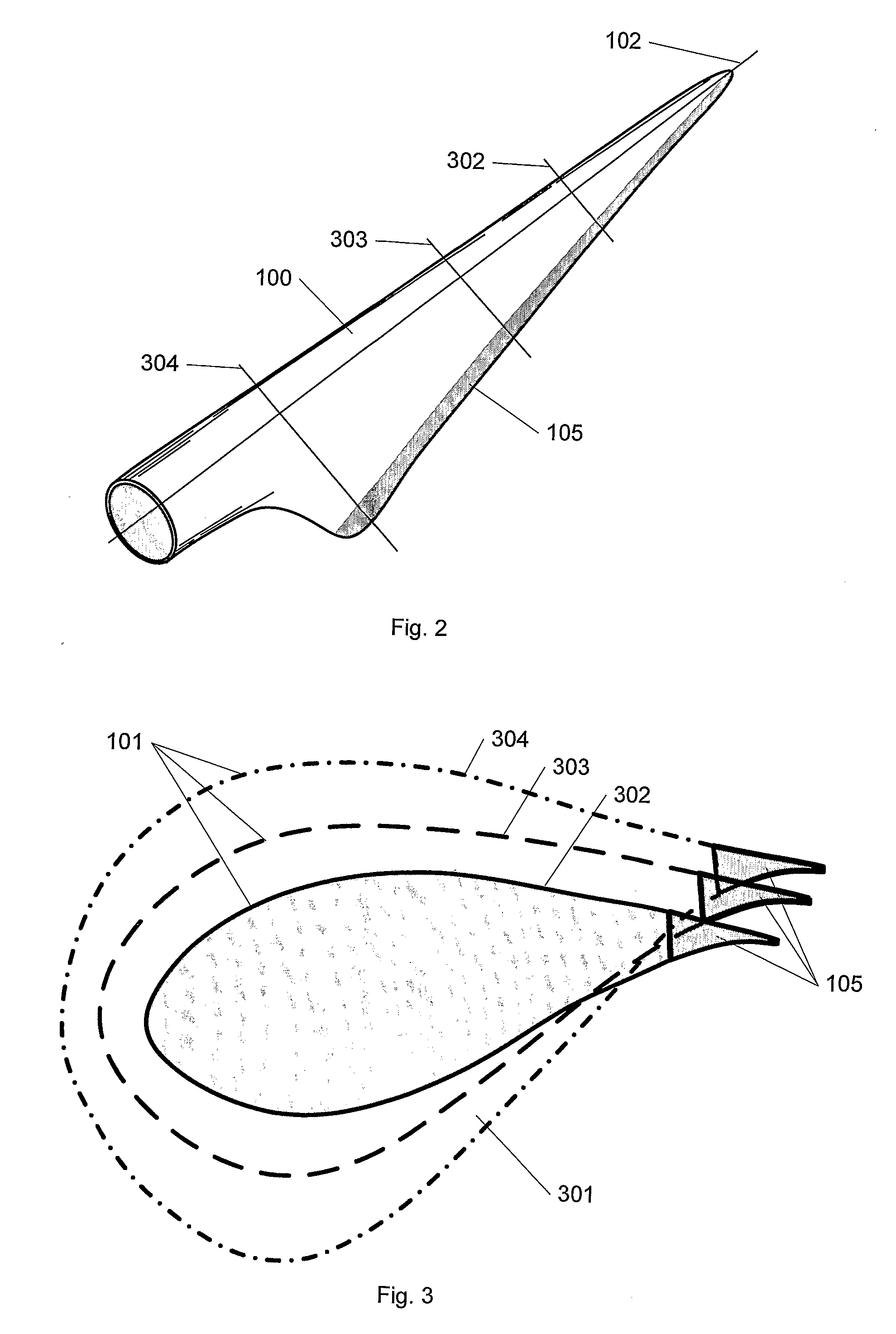Airfoil Family for a Blade of a Wind Turbine
a technology of airfoil and wind turbine, which is applied in the direction of propellers, propulsive elements, water-acting propulsive elements, etc., can solve the problems of high cost, high complexity, and high cost of fibres or flexible materials, and achieves the reduction of the overall weight of the blade, the reduction of the noise emitted by the blade in use, and the control of the configuration and dimensions accurately
- Summary
- Abstract
- Description
- Claims
- Application Information
AI Technical Summary
Benefits of technology
Problems solved by technology
Method used
Image
Examples
Embodiment Construction
[0027]FIG. 1 shows a blade 100 for a wind turbine according to the prior art. The blade is described by a number of profiles 101 as outlined next to the blade. Each profile 101 indicates the outer contour of the blade 100 in a cross-sectional view in a given position down along the longitudinal axis 102 of the blade corresponding to a cross-section along the marked lines 103. Series of profiles for wings of aircrafts often consist of the same type of profile which is then scaled to size outwards of the wing. This is often not the case with blades for wind turbines which may instead be given by series of profiles featuring different types of profiles, between which the surface of the blade is thus interpolated or blended, and a smooth transition is created between the various profiles. This is illustrated by the blade shown in FIG. 1 which, in a position most distally at the blade tip, is defined by a profile 104 featuring a sharp rear edge 105. A sharp rear edge is advantageous in t...
PUM
| Property | Measurement | Unit |
|---|---|---|
| width | aaaaa | aaaaa |
| width | aaaaa | aaaaa |
| width | aaaaa | aaaaa |
Abstract
Description
Claims
Application Information
 Login to View More
Login to View More - R&D
- Intellectual Property
- Life Sciences
- Materials
- Tech Scout
- Unparalleled Data Quality
- Higher Quality Content
- 60% Fewer Hallucinations
Browse by: Latest US Patents, China's latest patents, Technical Efficacy Thesaurus, Application Domain, Technology Topic, Popular Technical Reports.
© 2025 PatSnap. All rights reserved.Legal|Privacy policy|Modern Slavery Act Transparency Statement|Sitemap|About US| Contact US: help@patsnap.com



